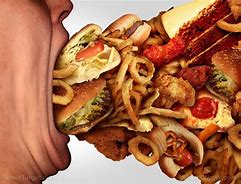
The stigma against processed food is growing, but there’s no way to sustainably feed eight billion people without it.
Say “processed food” and most of us picture unhealthy, cheap junk. Fresh food straight from the garden or the field is good. Once we’ve put it through a processing plant or a laboratory, we’ve removed its halo qualities and added a bunch of bad ones. That means meat substitutes are no better than junk food.
But this perspective is short-sighted. We’re not going to feed billions a nutritious diet sustainably without food processing. The growing backlash against processing is one that neither people nor the planet can afford.
Processed food is more than Coca-Cola, Dairy Milk chocolate and ready meals. Most plant and animal products go through some form of processing to convert them into something that we can – and want to – eat. We mill grain into flour to make bread. We butcher and debone animals to get meat. We pasteurise milk.
Processed foods have brought us countless benefits, many of which we quickly forget. Iodised salt is just one example; iodine deficiencies used to be common across the world, leading to increased risks of stillbirths and miscarriages, significant reductions in IQ and reduced cognitive development.
Most of the world now consumes salt with iodine added, and many countries have eliminated this deficiency. By adding nutrients to food, we’ve been able to address a number of other micronutrient deficiencies.
We’ve been able to preserve food and increase its shelf life, reducing food waste. We’ve reduced the spread of food-borne diseases. Those with food allergies and intolerances can now eat a balanced diet. We don’t need to spend the day preparing food – this has been particularly important for the educational and career development of women. Last but not least: taste. Our shelves are now lined with great-tasting foods.
Of course, when people talk about “processed” food they’re often talking about ultra-processed food (UPF). These snacks and prepared meals are designed to have a longer shelf life and be more convenient and palatable. Corporations work hard to find the “Goldilocks” flavour profile we can’t resist by adding sugar and fat to make food as tasty as possible. Many describe these finely tuned combinations as addictive.
It’s true that increased consumption of ultra-processed food has been linked to poor health outcomes. It has been associated with lower consumption of essential nutrients, such as vitamins C, D, and B12. The more of these foods we eat, the more likely we are to be overweight or obese. This puts us at higher risk of health conditions like cardiovascular disease, diabetes and cancer. Ultra-processed foods are easy to overconsume.
The problem with most UPFs is that they are higher in calories, sugar and fat. And they’re lower in protein and fibre, the nutrients that keep us full. But this isn’t inherent to food processing itself. What matters is what corporations add to our food. They can create healthier foods if they want to – or if we demand it.
One area where I see the biggest backlash against processing is with meat substitutes. These products try to emulate the experience of meat and include plant proteins such as soy-based sausages; Impossible and Beyond Meat burgers; proteins made from fermentation such as Quorn and lab-grown meat.
Passionate meat eaters and vegans don’t always see eye to eye, but they do often agree that natural is best. Vegans push back against meat substitutes because they’d rather people go straight to natural plant foods like peas, beans and lentils. Meat eaters push back on these products for their artificiality, calling them “Frankenfood.”
Headlines critical of these foods go something like this: “People have told you that meat substitutes are super healthy, but they’re lying to you.”
So, are meat substitutes better for your health or are they part of an elaborate con?
Well, “healthy” compared to what?
Are they better than meat equivalents? Are you better off going for an Impossible or Beyond Meat burger than a beefburger? Or a soy-based sausage over a pork one? Possibly.
I crunched the numbers on the nutritional profile of meat substitute products and compared them to meat. To their credit, meat substitutes tend to be lower in calories and saturated fat and higher in fibre. To their detriment, some are lower in protein, and importantly, often contain lower-quality protein, meaning they contain less of the essential amino acids that we need.
When it comes to sodium, it’s a bit of a mixed bag. Substitute burgers tend to be comparable to beef. Substitute sausages look bad, but they contain less salt than their pork equivalents.
Many substitute products are now fortified with Vitamin B12, iron and calcium. The Impossible burger actually has more Vitamin B12 and iron than beef. Many plant-based milks are fortified too. On balance, they’re probably a bit better for our health than their meat equivalents.
Are they better than whole, plant-based foods? Less likely, but possible, depending on the nutrients you’re trying to optimise for. They are higher in protein and have micronutrients added that plants don’t have much of, such as Vitamin B12. But they are also higher in saturated fat and salt.
However, this showdown between natural plant foods and meat substitutes is kind of beside the point. People who want a whole, plant-based diet aren’t the target for these products. If people want to switch to plant proteins such as peas and lentils, great.
But this group is a minority. What meat substitutes offer is an easy swap for people who want “meat-like” meals. Many want an experience similar to meat: Substitutes try to give them this without killing animals – and without the high environmental cost of farming meat.
- A Wired report











